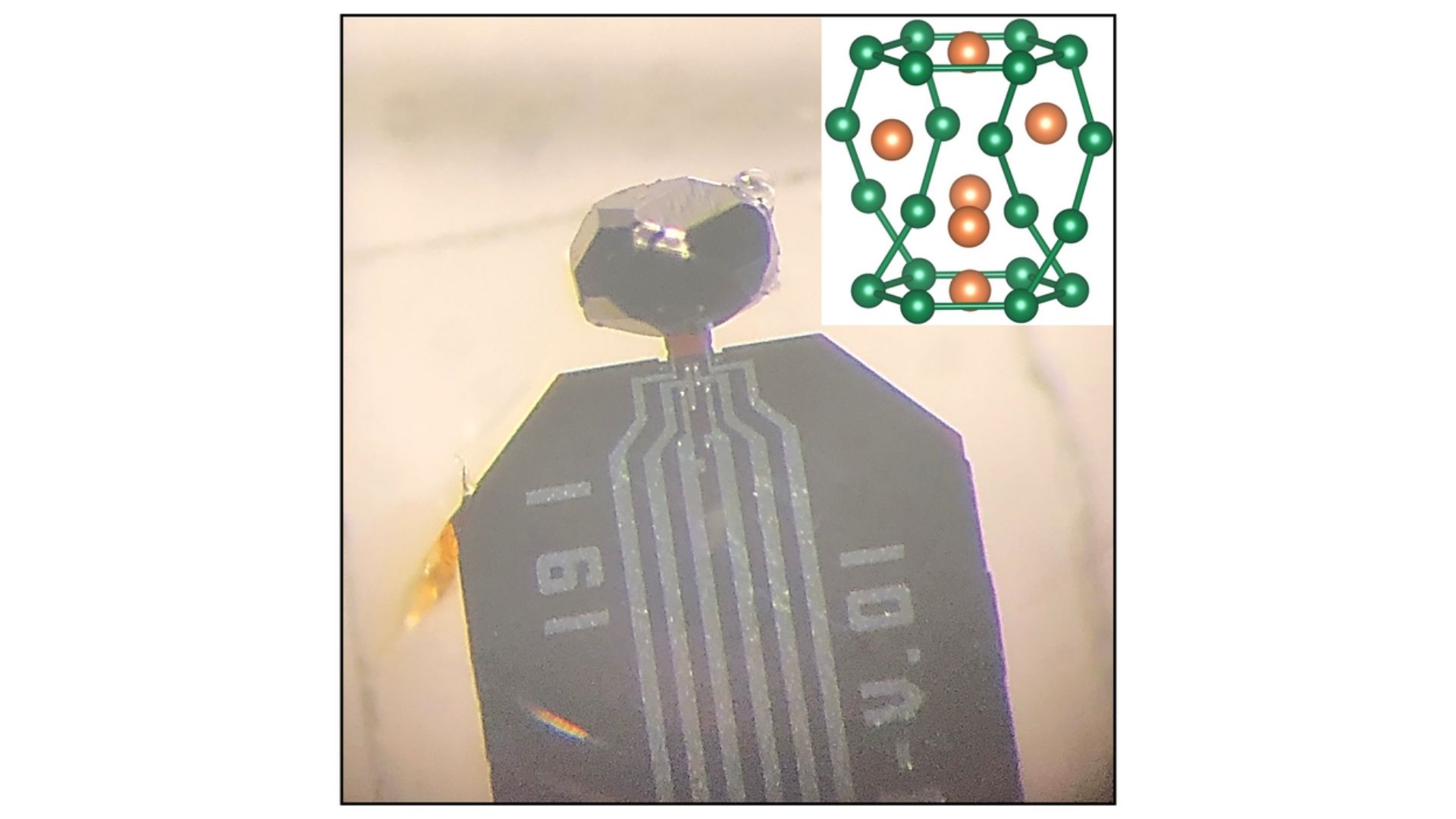Scientists Have Created a Novel Metal That Allows Fluid-Like Electron Motion
New electronic devices are just over the horizon.

Someone once said: “be like water.”
And a team of researchers has taken this literally, forging a new metallic object in which electrons can flow freely, like water in a pipe, providing a fundamental pivot in behavior from particle- to fluid-like dynamics, according to a recent study published in the journal Nature Communications.
This could lead to a new generation of electronic devices.
A new material enables electrons to flow ‘like water’
Exploring a metal superconductor comprised of both Germanium and Niobium (NbGe2), Boston College Assistant Professor of Physics Fazel Tafti, along with colleagues from Florida State University and the University of Texas in Dallas, discovered that a strong interaction between phonons and electrons modify the transport of electrons from their typical, particle-like (or diffusive) motion, to a hydrodynamic, of fluid-like, motion. And this marks the first discovery of an electron-phonon liquid within the NbGe2 substance, said Tafti in an embargoed release shared with IE. “We wanted to test a recent prediction of the ‘electron-phonon fluid’,” he added in the release, emphasizing how phonons are a crystal structure’s vibration. “Typically, electrons are scattered by phonons which leads to the usual diffusive motion of electrons in metals. A new theory shows that when electrons strongly interact with phonons, they will form a united electron-phonon liquid.”
“This novel liquid will flow inside the metal exactly in the same way as water flows down a pipe,” added Tafti, in the release. In verifying the predictions about this, Tafti and colleagues believe this discovery will serve to motivate further analyses of the novel material, to identify its manifold applications. Modern lifestyles depend on the flow of water in pipes, in addition to the electrons in electrical wires, and, while this “pipeline” format sounds similar in both cases, they are in reality starkly different. Water flows as a continuum of fluid, instead of discrete molecules, according to the laws of hydrodynamics. By contrast, electrons stubbornly flow as discrete particles, and diffuse within metals as they’re split apart via lattice vibrations.

Reproducing electrons with hydrodynamics in other materials could lead to new electronics
The research team employed three experimental methods to highlight the conduction of electricity in the novel metal, explained Tafti. Raman scattering revealed the change in motion in the vibration of the NbGe2 crystal caused by the special fluid-like flow of electrons. Additionally, electrical resistivity measurements revealed an excess mass for electrons, and X-ray diffraction unveiled the material’s crystal structure. One technique called “quantum oscillations” proved especially useful in determining the mass of electrons in the material, enabling the researchers to see that the electrons’ mass in all trajectories was thrice what they expected. “This was truly surprising because we did not expect such ‘heavy electrons’ in a seemingly simple metal,” explained Tafti in the release. “Eventually, we understood that the strong electron-phonon interaction was responsible for the heavy electron behavior.”
“Because electrons interact with lattice vibrations, or phonons, strongly, they are ‘dragged’ by the lattice and it appears as if they have gained mass and become heavy.” It should go without saying that this is a monumental achievement. Tafti’s next step, according to him, is to seek out means of controlling the hydrodynamic fluid of electrons in other materials, besides NbGe2, which could lead to a new generation of electronic devices whose electrons can move in the fluid regime.
 SHOW COMMENT ()
SHOW COMMENT ()









